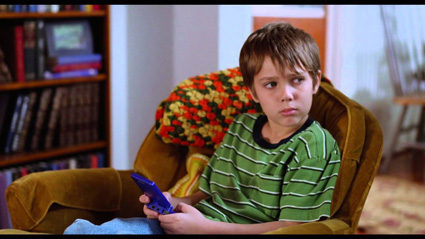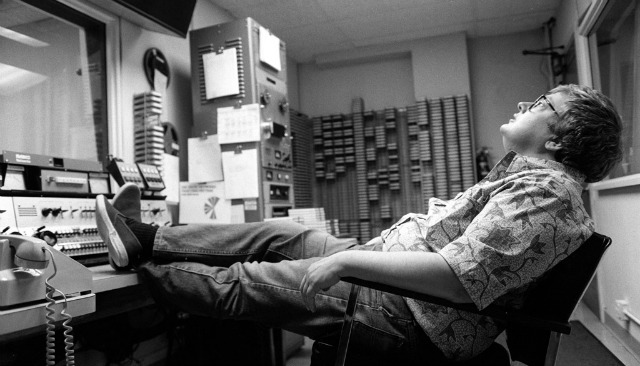11 Great Movies We Watched This Year: Rob Christopher's Picks
By Rob Christopher in Arts & Entertainment on Dec 23, 2014 5:00PM
One thing about 2014: for the most part, I didn't give a flying fig about what Hollywood did. In a brilliant essay, Mark Harris puts his finger on exactly why:
Over the 25 years that followed Star Wars, franchises went from being a part of the movie business to a big part of the movie business. Big, but not defining: even as late as 1999, for instance, only four of the year’s 35 top grossers were sequels.That’s not where we are anymore. In 2014, franchises are not a big part of the movie business. They are not the biggest part of the movie business. They are the movie business. Period. Twelve of the year’s 14 highest grossers are, or will spawn, sequels. (The sole exceptions — assuming they remain exceptions, which is iffy — are Big Hero 6 and Maleficent.) A successful franchise is no longer used to finance the rest of a studio’s lineup; a studio’s lineup is brands and franchises, and that’s it.
The only "franchise" (and ugh, how I hate that word) I actually take pleasure in these days is James Bond. So for me, until SPECTRE lights up screens next year, the monotonous multiplex fare of comic book movies, purile laughless comedies, and computer animated kiddie flicks will largely remain flyover country, a landscape I bypass on the way on the Landmark Century, the Music Box, The Siskel, and all the other outstanding indie theaters in town. For while Hollywood might have largely sucked in 2014, it was still a fantastic year for movies, not only for new releases but for revival screenings too. Here are my top 11.

Ellar Coltrane as Mason (IFC Films)
As I wrote earlier this year, "By design and through detail, it's about a very specific boy, and his family and friends in Texas in the first part of the 21st century. That specificity of detail, and the richness of the performances, help to create a world that feels utterly real. Mason's experiences hardly dovetail with those of my own childhood. Yet the movie enveloped me so thoroughly in its world that I found myself replaying moments from the movie in my dreams the night after I saw it. The very definition of haunting, and only one of the many reasons why Boyhood is far and away the best film I've seen this year. "
The Cool World (1963, directed by Shirley Clarke)
Earlier this month Black Cinema House screened a rare 16mm print of Clarke's criminally underseen masterpiece, a film I'd read about for years but had never been able to see. It was certainly worth the wait. A gritty portrait of a young teenager named Duke and his life on the mean streets of Harlem, the film might be technically crude but it's still as powerful and relevant as the day it was made. It was a very early credit (as producer) for Frederick Wiseman, who still owns the rights; here's hoping that he spearheads a restoration soon.
Free Fall (2014, directed by György Pálfi)
This Hungarian movie played at the Chicago International Film Festival in October and then appears to have vanished. A shame, since this haunting and dryly funny series of surreal blackout sketches crammed in a host of images I will not soon forget, including passionate lovemaking through Saran wrap, a little boy lying peacefully next to a bull, and a most unusual gynecological procedure.
Harriet Craig (1950, directed by Vincent Sherman)
I'm a sucker for Joan Crawford, and Harriet Craig delivers the goods. Here she plays a domineering and manipulative woman obsessed with maintaining her well-run household, the perfect vehicle for her industrial-strength persona. Nobody wields a sweetly poisonous remark like Joan. And naturally the plotline leads to some very ironic conclusions about society's views on domesticity. What a fascinating double bill this would make with Todd Haynes' Safe (which was just released on home video by Criterion).
Interstellar (2014, directed by Christopher Nolan)
Though Nolan's movies always open on thousands of screens simultaneously, he remains a champion of film of all kinds, both large and small. For me, this journey through space and time was never less than riveting, with solid performances, a screenplay full of ingenious ideas, and mind-blowing visual effects. It's pretty much everything a big budget epic should be but rarely is. I plan on seeing it again when the Siskel screens it in 35mm.

Photo courtesy Magnolia Pictures
James deftly weaves original documentary footage taken in the months before Ebert's death with period footage, onscreen text, and various soundbites from Ebert as well as an Ebert soundalike to fashion a rich portrait of the late film critic. That alone would make it a great film. But Life Itself goes even further, exploring how integral communication is to being human, and how deeply the hunger to connect with others is connected with the will to live. CNN is broadcasting it Sunday, January 4.
A Master Builder (2014, directed by Jonathan Demme)
A legendarily successful, egotistical architect who has spent his entire life manipulating colleagues, clients, and his wife and family is dying. Ostensibly he wants to make peace with his demise, but he can't seem to relax his grip on power in order to do it. As the saying goes, something's gotta give. Wallace Shawn dusted off a play by Ibsen, rehearsed it with Andre Gregory and a host of other actors for more than ten years, and had Demme make it into a movie. The result is a film so intense and intensely strange that moment to moment I was unsure whether to laugh, cringe, or sigh. It's a thrilling experience. The entire cast, including Julie Hagerty (!) as the long-suffering wife, is superb. But Chicagoan Lisa Joyce is especially good in a meaty role as enigmatic seductress Hilda, who might also be the Angel of Death.
National Gallery (2014, directed by Frederick Wiseman)
Like many of Wiseman's epic institutional portraits, National Gallery is many films in one. It's about one of the finest collections of art in the world. It's about how to appreciate art. It's about what it takes to manage a cultural institution, to preserve its collection, and to share it with the public while maintaining its integrity. It's also about polishing floors, arranging fake potted plants in a tasteful way, what people look like when they're looking at art, and how the patina on a painting takes on a whole new appearance when seen under a powerful microscope. National Gallery is about all those things, and many more besides, and it's worth watching every one of its 181 minutes.
Night Moves (2014, directed by Kelly Reichardt)
It's no secret: I've had a love affair with Reichardt's work since I watched Wendy and Lucy at the Chicago International Film Festival. Since then she reeled off two additional masterpieces, first Meek's Cutoff and now Night Moves. A slow-burning suspense thriller sounds like a contradiction in terms. But it's precisely that quality of subtle yet relentless tension that gives her movie its peculiar power, with outstanding turns from Jesse Eisenberg, Peter Sarsgaard, and Dakota Fanning. "My films are just glimpses of people passing through," Reichardt said in an interview, and I can't wait to see where she passes through next.
Only Lovers Left Alive (2014, directed by Jim Jarmusch)
Tilda Swinton and Tom Hiddleston as vampire lovers, prowling nocturnal Detroit and Tangier? Yes, please. Jarmusch's best film in years features all those qualities that makes him a true original: an air of existential melancholy, loads of location-specific atmosphere, a fantastic cast, and a killer soundtrack. There's just enough plot to generate suspense and disquiet, but not so much that the movie turns into just another genre piece.
Under the Skin (2014, directed by Jonathan Glazer)
You're watching the screen, and watching what's on the screen very, very carefully. The shot holds perfectly still, letting the action unfurl before you; and the image, larger than life, is crystal clear. Yet for the life of you, you can't understand what it is you're seeing. That's an exceedingly rare experience in movies these days, but it happened to me at least half a dozen times in Under the Skin, a science fiction (?) movie as hypnotically dense as Interstellar was expansive. The finale is equal parts haunting and horrifying.